

A study visit organized with the financial support of the Jagiellonian University of Kraków took four students of English at its Institute of English Studies to the remote locations that Chopin visited in the summer and autumn of 1848.
Day 1
It was very early in the morning on the 24th day of March that we embarked on our expedition to retrace Frédéric Chopin's steps in Scotland in 1848. His journey from London to Caledonian soil lasted twelve long hours, while ours from Kraków to Glasgow lasted only three. He travelled by railway laid just a couple of months before, we covered a longer distance, yet enjoying the comfort of the vehicle.
It was quite a challenge to wake up early enough to ensure our arrival at the airport by 5 am, but all of us made it on time, despite the limited amount of sleep we got the previous night. The drowsy period of the three-hour flight was disturbed by heavy turbulence over Glasgow, yet we landed happily. Scotland welcomed us in a very Scottish way - with clouds, drizzle and cold wind. Surprise, surprise...
The turbulence was the first of two unexpected, even fearsome experiences that day. Hardly had we gotten into the hired car than we were hit by another customer of the rental company, perhaps still trying to work out the British rules of driving on the "right" side of the road. Thank goodness the collision did not cause any damage. Otherwise, we would probably have had no choice but to explore Scotland the same way Chopin did in 1848 - on foot or by carriage. Or by ship.
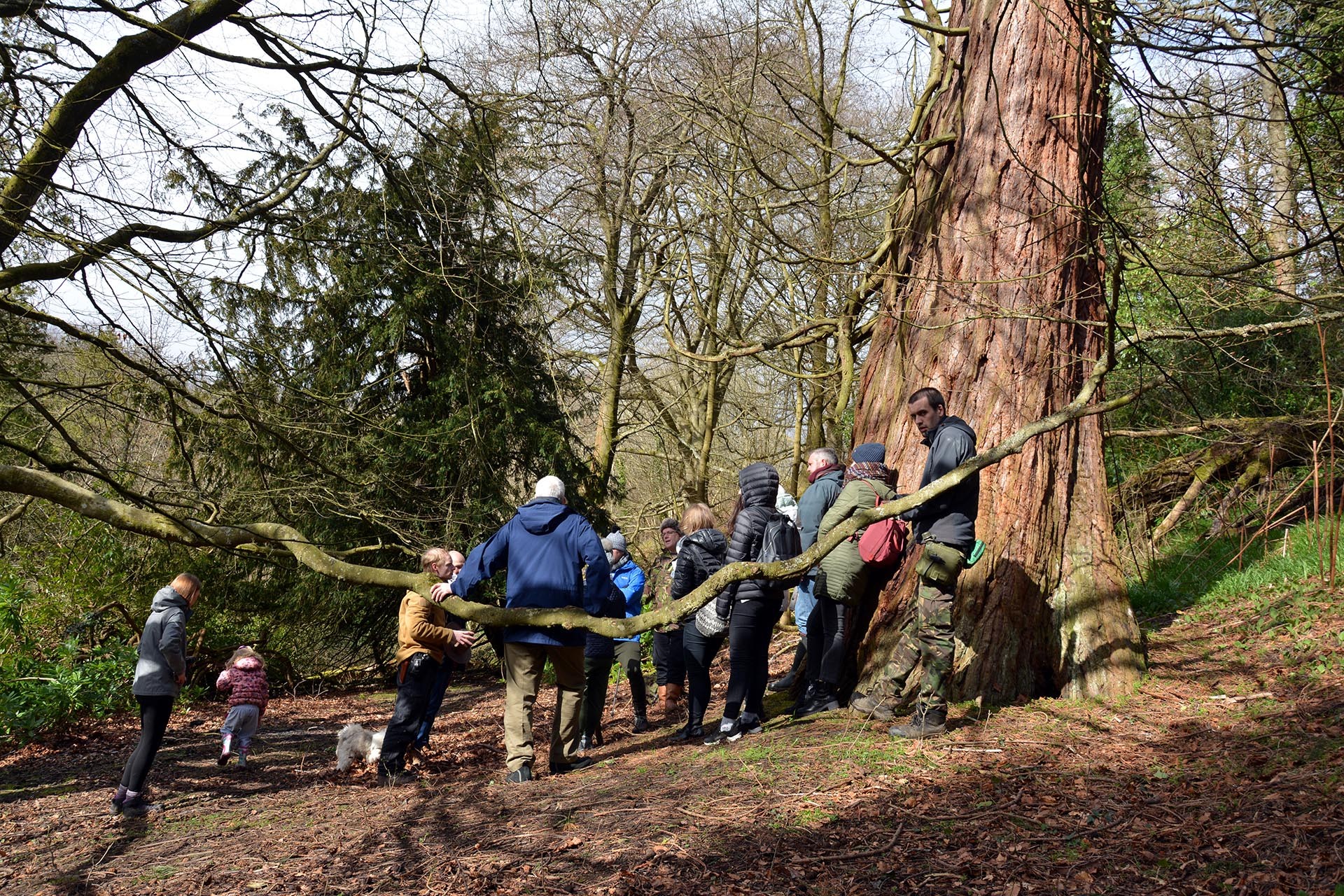
After assuring ourselves that nothing serious had happened, we finally set off for the first post on our list, where we had an appointment with representatives from the local community - Wishaw - just a 30-minute ride from the airport. Our main objective was to see the ruins of what once was Wishaw House, sadly demolished in the 1950s. It had been the home of Lord and Lady Belhaven, who hosted the forlorn Chopin in early October 1848. Graham Butt and John Smillie, from Wishaw's Campfire History, and other members of Coltness Community Council were already waiting for us to take us on a guided walk in the nearby woods to the ruins of the forgotten Wishaw House.
Completely demolished, or perhaps one should say, barbarously savaged some 60 years ago, Wishaw House is there no more. You can see the traces of the mansion, though. As we were approaching our destination we were shown the remains of a dove court or the office of a former coal mine. And by remains, I mean a few moss-covered stones. And then a heart-breaking sight emerged: the place there Wishaw House once stood was now covered with trees and other plants. The ruins of the Belhavens' spectacular residence are now covered with moss, symbolically illustrating the power of nature that has taken over the area in the past six decades. To think the place where our Great Romantic stayed 171 years ago could so easily fall into oblivion.
The walk culminated in a campfire with hot coffee and marshmallows both served. After the walk, Mrs. Catherine Stihler - a former member of the European Parliament - and her family invited us for a dinner at a local golf club. Our hosts were interested in our concern about Chopin's visit to faraway Scotland, which we discussed with great pleasure over the meal.
It was already around 4pm when we decided to drive to our hotel in order to check in and take a short break, as the day so far had been exhausting. We gave up on Hamilton Palace, another demolished residence of Chopin's stay and went to the Merchant Hall in the center of Glasgow instead. This was where Chopin gave his only recital in Glasgow. We could not make it inside the Hall, but we photographed the facade; it was the last item on the list of the first day of the expedition to Scotland in Chopin's footsteps in 2019.
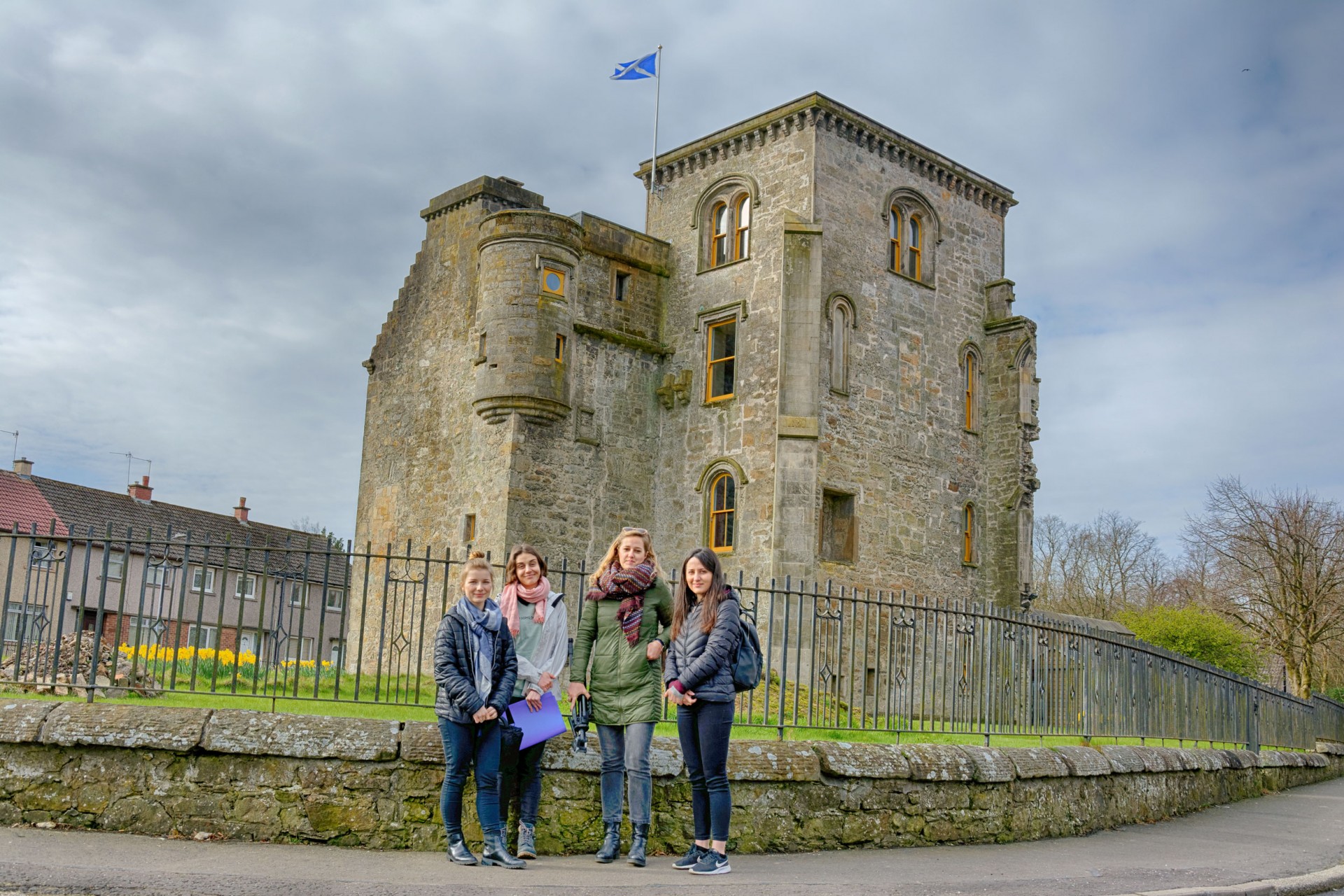
Day 2
It was not surprising that the chilly Scottish weather greeted us again on the 2nd day of our Scottish expedition. Having dressed hastily, we bounded down the stairs, eager to try the famous English breakfast - although in this case, it was the Scottish version, complete with haggis. We were not disappointed, though the lack of freshly baked bread was keenly felt.
Though we would have gladly sipped our coffee for an hour longer, the professor was adamant - Chopin was waiting, after all. In a flash our suitcases were piled into a heap in our rental car and off we went. I wish I could say we were already accustomed to driving on the left side, but entering a roundabout on the 'wrong' side caused the same wave of panic as it had the day before. Other problems were caused by the steadily falling temperature in the vehicle - later we realized that setting the AC to low didn't decrease the speed of the fans, but rather that the temperature in the car was as low as the system (and we!) could handle. We solved the problem in the end, and by that time we had reached our first destination - Johnston Castle.
Though the name suggests otherwise, all that is left of it today is a two-story building with a small turret attached. In Chopin's times, however, the building and the surrounding grounds took up a comparable amount of space to that of the town of Johnston today. It was here that Chopin nearly met his end in a potentially fatal carriage accident (one of the horses reared and bolted, causing the carriage to crash into a tree with Chopin still inside). Unfortunately, our attempts to enter the residence were unfruitful, but that did not stop us from admiring it from the outside and taking a few memorable photographs.
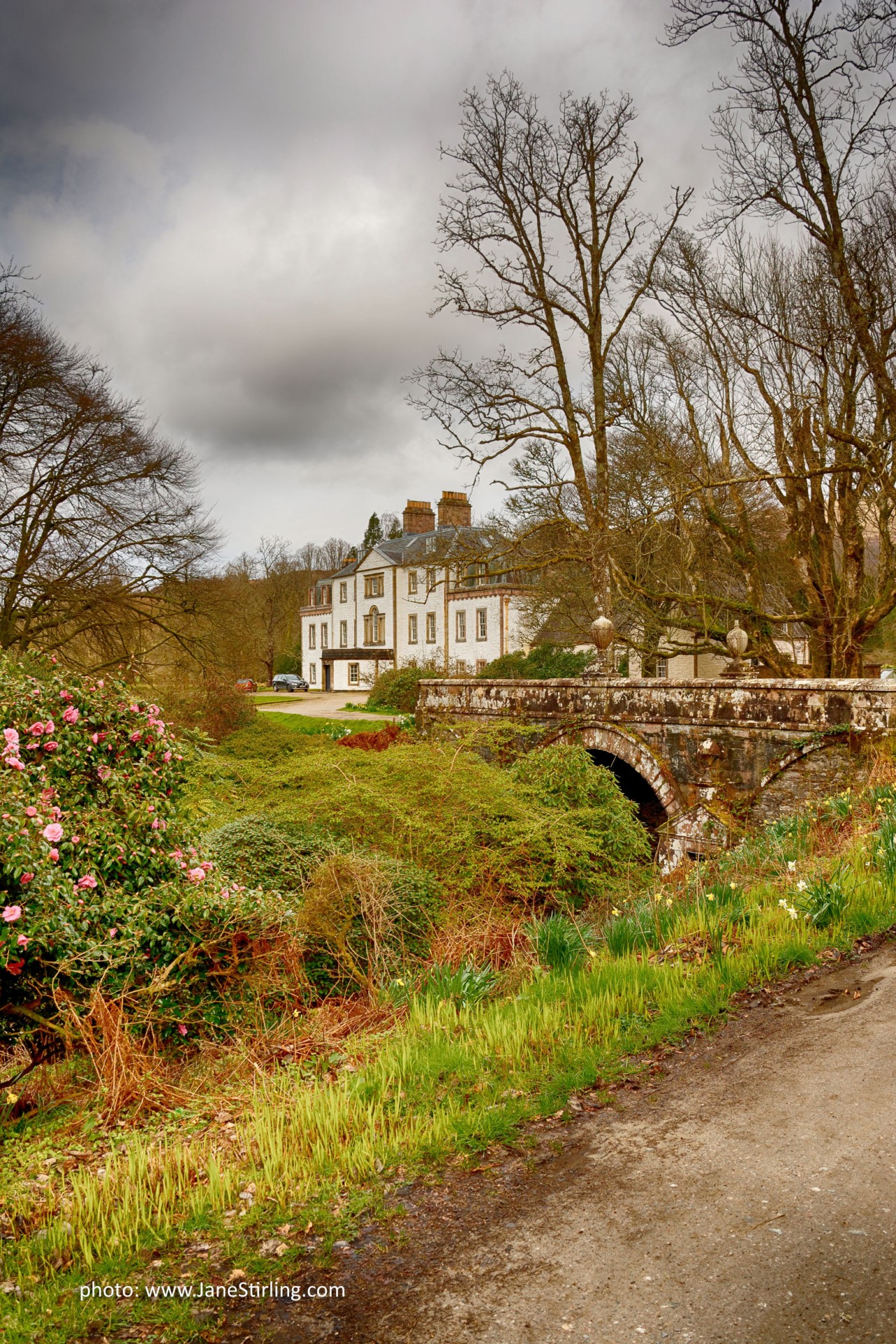
Luck was clearly not on our side, as our next stop, Milliken House, proved to be impossible to find. Despite hours of wrestling with two faulty navigation systems and desperate attempts to acquire information from passersby, we were forced to turn back. Milliken House (with its famous, fairy-tale-like Milliken tower) was the main residence of Sir William and Lady Napier, one of the many sisters of Jane Sterling, this of course being the reason for his stay in the refined estate.
We were not disappointed for long, though, as in a mere hour we arrived at Strachur House, located in western Scotland on the banks of Loch Fyne. Before entering the house, we took a stroll down by the edge of the same water that Chopin had walked by, soaking in the heavy air of the now murky water and admiring the nearby clusters of daffodils. Having taken some beautiful photographs and contemplated the general atmosphere to our satisfaction, we left for Strachur. We were expected at 1pm and Sir Charles McLean - the owner of the house - was waiting for us. After some brief introductions, we were taken on a tour of the house in which Chopin rested for many happy days. In short order, we were being ushered through the Victorian-style rooms until we reached our principle destination: the music room. Here Dr. Jaroszek discussed the possibility of a concert of Chopin's music being played on the 200-year-old pianoforte, in the company of a harpsichord equally advanced in age. As we had seen all of the house that was available to visitors, we said goodbye to our kind host and started our long drive up to the Scottish Highlands, where the nearest reasonable accommodations could be found.
Thus ended day 2 of our expedition. In exhaustion we headed directly to bed shortly after reaching our lodgings in the quaint, highland town of Fort William.
Day 3
Chopin never visited Fort William; we just needed some rest.
Day 4
We started our day with a rich breakfast because there was a long journey to Gargunnock ahead of us. Although we were not delighted by the prospect of this long haul ride, it turned out to be an amazing one. Such was our enthrallment by the views of the untamed Scotland that we had to stop our car very often to take more and more pictures. We were even able to admire a rainbow, seemingly the quintessence of the Scottish weather. The trip was also an opportunity to raise interesting discussions about variable subjects, from contemporary education in Poland to Chopin's means of transportation. He may have been "dragged around" Scotland, as he put it, but still he must have been inspired by the Scottish landscape. Who knows, maybe if he hadn't been terminally ill, he would have composed some sonatas or mazurkas with a hint of Scotland in them.
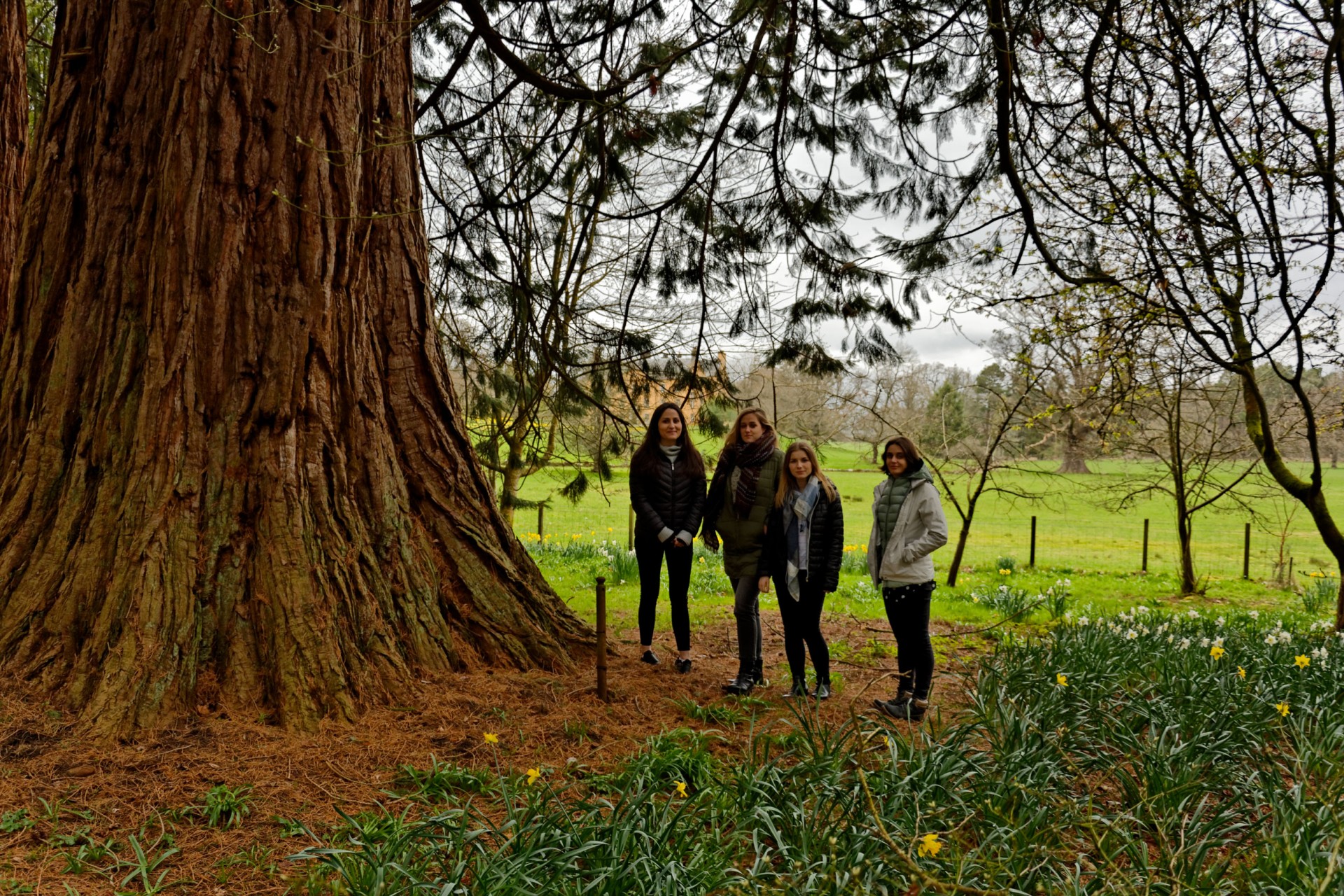
Our destination welcomed us with another portion of wonderful views. We reached Gurgannock House and its marvelous park and garden, which owe their present appearance to the last of the Stirlings of Gurgannock - Miss Viola H.C. Stirling. The family rumour has it that Chopin was brought by Jane to this very house and stayed there. He is also believed to have played on a grand piano now located in the drawing room. Unfortunately, we weren't able to enter the building, though we were able to enjoy its surroundings. We were especially fascinated by the abundance of golden daffodils, which made us feel like William Wordsworth. We also had an opportunity to admire a large sequoia which doubtless remembers Chopin's visit to Gurgannock. As hugging trees is believed to reduce stress and to have a possitive effect on your health, we hugged the sequoia without embarrassment. We left Gurgannock in high spirits, with Wordsworth's poems and Chopin's music in our thoughts.
Our next stop was Dunblane, where we were to meet with the direct descendants of Jane Stirling - Patrick and Susan Stirling-Aird of Kippenross. On our way we stopped to admire a foggy view of Stirling Castle and with the Wallace Monument lurking from afar. Dunblane emerged as an atmospheric, cozy town with its imposing Dunblane Cathedral - the place where Jane Stirling was most likely buried. The Cathedral is one of the few surviving medieval churches in Scotland and it is incredibly impressive. Invited to explore by its lovely Scottish custodian, we quickly headed for the north aisle of the nave which is also known as the 'Keir' or the 'Stirling' aisle. There we found a golden plaque with the inscription: "To the glory of God and in memory of those members of the House of Stirling of Kippendavie interred in this aisle from 1595 to 1859". This suggests Jane is among them as she died just in 1859. It was a magical moment, one in which we felt we could almost touch history. Or herstory, one could say...
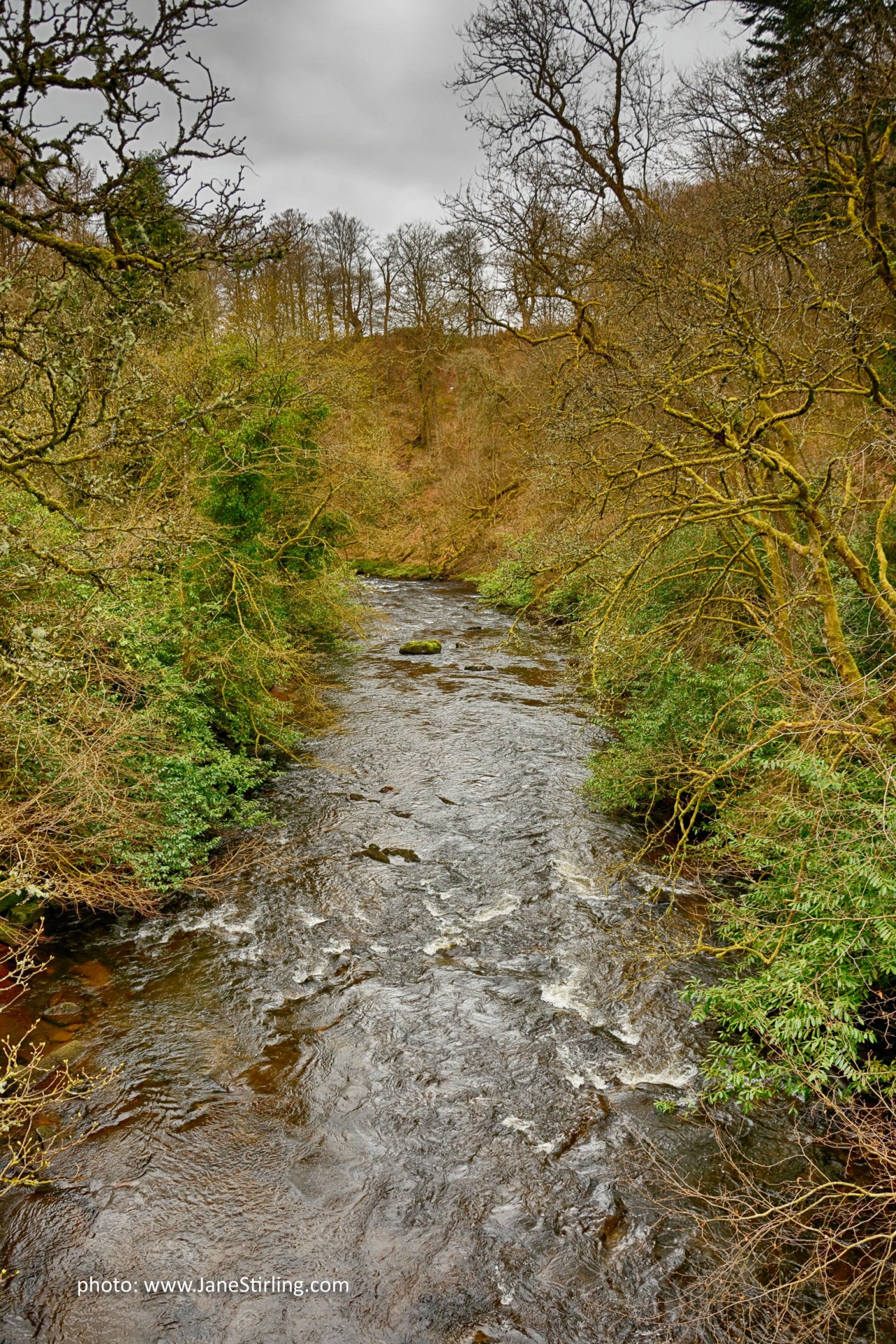
Leaving the cathedral, still enraptured by its greatness and majesty, we were nonetheless in a hurry to make our appointment with the owners of the Old Kippenross House. This is the place where Jane Stirling grew up. As Scottish tradition has it, we bought flowers for Mrs. Stirling-Aird before leaving the centre of Dunblane to find the road to the old manor. For an unacquainted visitor this could be a hard task as the house is well hidden from the public, but for Dr. Jaroszek it was child's play. He knew which turning to take, once or twice and suddenly it emerged - a fifteenth century house, painted pink to symbolize support for the Jacobites a few centuries ago. We were welcomed by Patrick and Susan Stirling-Aird, their daughter Lucinda and their lovely border terrier. It was a short but fascinating meeting. We were allowed to take a look at the New Kippenross House, also closed to the public, and to walk around the garden and the marvelous park surrounding the estate. And there we came across some horses and even a beautiful young deer. So idyllic was the atmosphere that we started talking about Chopin's loss when he had eventually decided not to come to Kippenross. We pictured, in our mind's eyes, Jane, who visited her birthplace alone, walking down the different paths in the park, thinking about Frederic and picking a rosary leaf for him.
We left Kippenross in a melancholic mood and decided to make a quick stop on our way near the Old Stirling Bridge. Thence we hit the road to Edinburgh, where we were to discover more about Chopin's Scottish expedition.
Day 5
We began exploring our planned destinations for the last day of our fascinating expedition in the evening of day four. The story begins on August 5th 1848 when Chopin, after twelve hours of an exhausting journey, arrived at the Lothian Road Station and met Dr. Lyszcynski, who was meant to guide the pianist through his recovery.
The fifth day began in the early hours of the morning. Ready for fresh adventure, we eagerly left our rooms and rushed out to enjoy our last Scottish breakfast. Despite having to wait for quite a few moments for our food to be served, our enthusiasm for grasping the last bits of Scottish beauty did not fade in the slightest. After a nutritious meal and a slightly too strong coffee we were ready to investigate our new destinations.
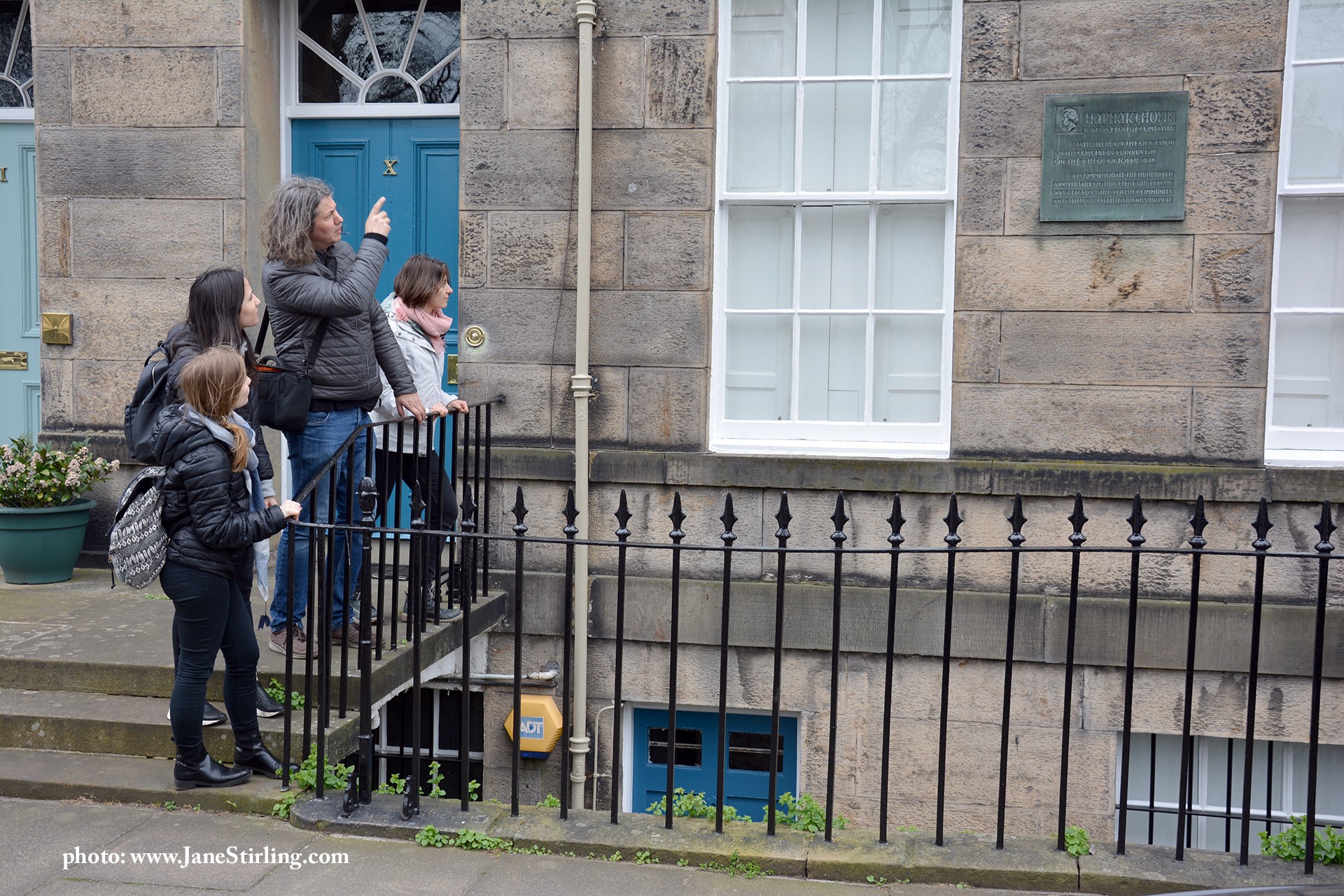
The first
location we explored that day was what used to be the Hopetoun Rooms where Chopin
gave a public concert on October 4th 1848. It was, in fact, the last concert that Chopin gave in public. The place was under reconstruction and we were not able to see its interiors. Still, we certainly felt the spirit hovering over the area.
After arriving at the Lothian Station on 5 August 1848, Chopin spent two nights at Douglas Hotel in St. Andrew Square. We managed to locate the doors of the building that used to serve as the hotel. We rang the bell, pessimistically thinkikng that the front door would be the only part of the building we would see that day, but much to our surprise the door suddenly opened and we were greeted by a very kind and welcoming lady, who generously agreed to give us a short tour of the place.
Our next and sadly final stop was Dr. Lyszczysnki's apartment at 10 Warriston Crescent, where Chopin had sought to recover under the careful watch of his host. It was fairly easy to track down the place. On the wall there is a plaque commemorating Chopin's stay in this very apartment. The place itself was unfortunately locked and, as we have recently learned, has been put up for sale. Let us hope the new owner will appreciate the legacy of the building and will make it available to history and music lovers.
We concluded our expedition with a short tour of Edinburgh, trying to photograph the view of the city as it glittered under the light of the sunset - and buying souvenirs, which of course included fridge magnets and traditional Scottish Shortbread. And then, satisfied with our tiring yet successful academic endeavour, with a big smile on our faces we set off for the airport.
Zuzanna Górska, Agnieszka Kruk, Barbara Meilak, and Angelika Wójciak